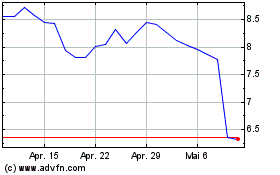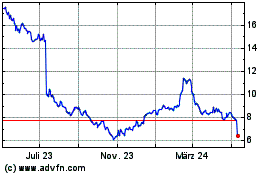58% of consumers say they would be more likely
to try a brand that incorporates voice technology in their customer
service
A new survey from TELUS Digital Experience (TELUS Digital) (NYSE
and TSX: TIXT), the company dedicated to crafting enduring customer
experiences through data, technology, and a human-centric approach,
shows that the use of voice technology has gained mass adoption
with consumers, both at home and in the workplace. From voice
assistants on smartphones and smart speakers in homes that answer
questions and tell you the weather, 81% of Americans now use voice
tech daily or weekly, with 68% increasing their usage over the past
year.
This press release features multimedia. View
the full release here:
https://www.businesswire.com/news/home/20241008559209/en/
Driven by AI, voice tech has reached a tipping point. While 36%
of consumers started using voice tech two to five years ago,
interest is accelerating —25% of Americans surveyed said they tried
it for the first time just the last month. These findings highlight
the growing importance of voice technology in the entire customer
journey, from the first engagement with a brand to driving
long-term retention and satisfaction (CSAT).
Advancements in Generative AI (GenAI) have moved voice
technology forward, improving interactions with virtual agents and
driving next-gen experiences that provide brands with a competitive
edge. Notably, 58% of respondents would be incentivized to try a
brand if they incorporated voice tech into their customer
engagement channels. This is reinforced by the fact that nearly 69%
of consumers had a positive first experience with voice tech and
continue to use it, while just 6% had a negative first experience
and haven’t used it since.
“Over the next year, every consumer app and website will have to
be rebuilt with an AI-powered voice and multimodal interface to
take full advantage of the advancements in voice tech, such as
Apple Intelligence and Google AI,” said Tobias Dengel, President of
TELUS Digital Solutions and author of The Sound of the Future: The
Coming Age of Voice Technology. “We see multimodal experiences that
combine voice, visual, and touch inputs as the future of how people
will interact with technology, and our survey findings show that
consumers increasingly want more natural and intuitive ways to
engage with digital platforms.”
The top reasons consumers said they used voice tech
included:
- Speed and efficiency: 35% said speaking is faster than
typing
- Convenience: 31% feel that voice commands are simpler
than navigating menus
- Multitasking: 30% like that voice tech allows them to
perform other tasks simultaneously
As for how respondents use voice tech:
- Personal use only: 56% use voice tech exclusively for
personal tasks
- Both work and personal use: 33% use voice tech in both
settings
- Work use only: 11% said they use voice tech exclusively
at work
Voice tech’s top applications include:
- In personal life: Daily tasks (66%), communications
(66%), and information retrieval (55%)
- In work life: Voice-to-text for emails, messages, and
content creation (44%), information retrieval (37%), and
administrative tasks (32%)
Consumer Frustrations with Voice Tech
Americans are embracing voice tech, mainly for its speed and
efficiency, so it’s not surprising that the survey also reveals
that their patience wears thin when things go wrong. Many consumers
have encountered errors: 65% say their voice assistant has
misunderstood their commands, one-third (33%) have had it execute a
command incorrectly, and over a quarter (27%) have received
incorrect information. That's when frustration gets the best of
many— 41% admit to yelling at their voice assistant when errors
happen, and 30% have even used profanity or curse words.
When consumers are rude to voice tech, they say it comes from an
urgency for resolution. Nearly one-third (30%) of surveyed
consumers have resorted to raising their voices or used profanity
with self-service tools, such as chatbots, in an attempt to
escalate their issues more quickly. On the flip side, the majority
of Americans (62%) do try to be polite, regularly saying "please",
"thank you" and “you’re welcome” during voice tech interactions,
and 29% have even apologized for being rude.
Voice Tech Improvements
Consumers pointed out several key areas for improvement that
could increase their use of tools and devices that incorporate
voice tech, including:
- 53% said they’d like to see improved accuracy in responses
- 46% say voice tech should have a better understanding /
interpretation of accents and dialects
- 41% want faster response times
- 41% would like to see improved security features / enhanced
privacy controls
Addressing these key areas for improvement requires close
collaboration with a leading technology partner with specific voice
tech expertise. By working with the right partner, businesses can
focus on implementing the advancements consumers value most,
ensuring their voice solutions are responsive, personalized and
also secure. This partnership-driven approach is essential for
creating customized voice tech apps, websites and services that
drive customer engagement and provide brands with a competitive
edge in a rapidly evolving market.
Ready to elevate your brand's voice experience? TELUS
Digital’s multidisciplinary approach to voice technology combines
talent and deep expertise from our award-winning AI, design,
strategy, and engineering teams. Our end-to-end services include
voice case identification, conversational UI design, voice tech
tool selection, and voice integration such as speech recognition,
natural language processing (NLP) and various APIs. Through our
proprietary Ground Truth Studio AI data platform, we also provide
fully-managed, multi-language audio dataset creation at scale
through data collection and annotation, detailed transcription, and
fine-tuning capabilities to enhance the performance of audio models
in specialized areas. Get in touch at telusdigital.com/contact
Survey Methodology: The survey findings are based on a Pollfish
survey that was conducted in August 2024 and included responses
from 1,000 men and women aged 18+ who live in the United States and
indicated a familiarity with voice technology.
About TELUS Digital
TELUS Digital (formerly TELUS International) (NYSE & TSX:
TIXT) crafts unique and enduring experiences for customers and
employees, and creates future-focused digital transformations that
stand the test of time. We are the brand behind the brands. Our
global team members are both passionate ambassadors of our clients’
products and services, and visionary technology experts resolute in
our pursuit to elevate their end customer journeys, solve business
challenges, mitigate risks, and drive continuous innovation. Our
portfolio of capabilities spans digital customer experience and
digital solutions, including digital IT services, such as cloud
solutions and AI-fueled automation, trust and safety services, AI
data solutions, including expertise in computer vision, and
front-end digital design and consulting services. Fuel iX is TELUS
Digital’s proprietary GenAI engine at the heart of our innovation,
helping enterprises advance their GenAI pilots to working
prototypes and production at scale, quickly, securely and
responsibly across multiple environments, applications and
clouds.
Powered by purpose, TELUS Digital leverages technology, human
ingenuity and compassion to fuel remarkable outcomes and create
inclusive, thriving communities in the regions where we operate
around the world. Guided by our Humanity-in-the-loop principles, we
take a responsible approach to the transformational technologies we
develop and deploy by proactively considering and addressing the
broader impacts of our work. Learn more at: telusdigital.com
View source
version on businesswire.com: https://www.businesswire.com/news/home/20241008559209/en/
TELUS Digital Investor
Relations Olena Lobach ir@telusdigital.com
TELUS Digital Media
Relations Ali Wilson
media.relations@telusdigital.com
TELUS International Cda (NYSE:TIXT)
Historical Stock Chart
Von Okt 2024 bis Nov 2024

TELUS International Cda (NYSE:TIXT)
Historical Stock Chart
Von Nov 2023 bis Nov 2024
